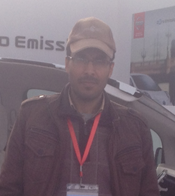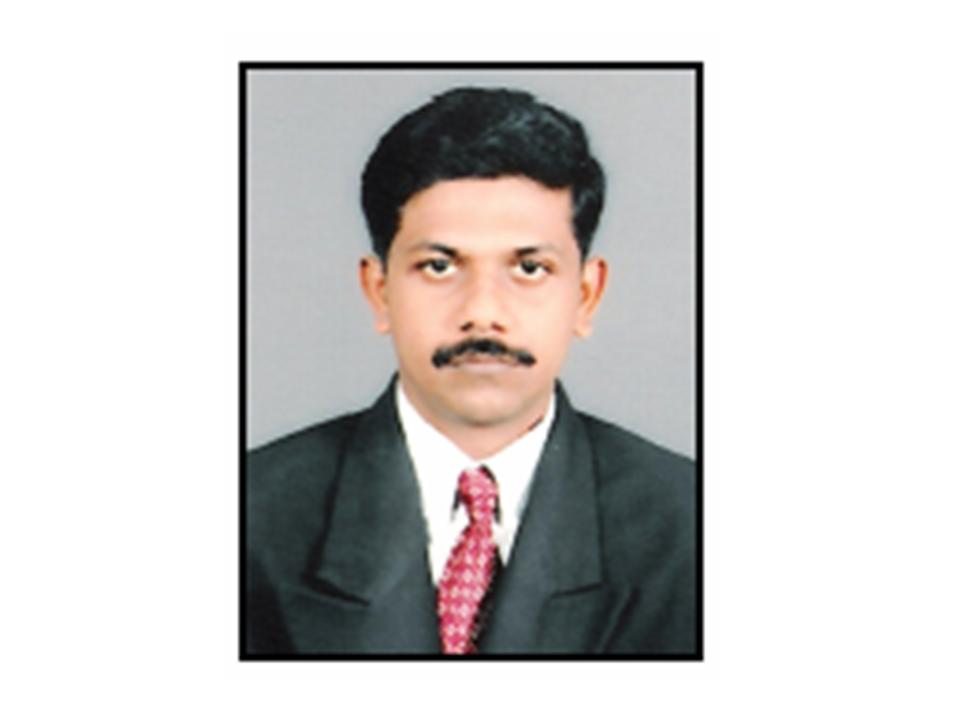Invited Speakers
Prof. Sewoong Chung
Department of Environmental Engineering, Chungbuk National University, South KoreaSpeech Title: Estimating Greenhouse Gas Emissions of Stratified Dam Reservoirs in Temperate Moist Climate Regions
Abstract: Reservoirs control the carbon cycle of terrestrial systems and are considered as important sources of greenhouse gases (GHGs), such as CO2, CH4, and N2O, into the atmosphere. However, studies on estimating carbon emissions of dam reservoirs located in temperate wet regions are very scarce. This study aimed to estimate the GHGs emissions and footprints of stratified reservoirs in South Korea. The GHGs footprint evaluates the change in net carbon emissions considering the watershed environment before and after the dam reservoir. The G-res Tool developed by UNESCO/IHA was used to estimates CO2 and CH4 emissions by considering various pathways of emissions and to characterize changes in GHG fluxes over 100 years based on the expected lifetime of dams. As a result, it was found that most large-scale multi-purpose dam reservoirs with low power intensity (hydroelectric power generation capacity per unit area of the reservoir, W/m2) are the source of GHG emissions to the atmosphere, but the emission intensity (GHG output per unit power, gCO2-eq/kW) was significantly lower than that of fossil fuels. As the dam reservoir carbon footprint evaluation is essential for the Clean Development Mechanism evaluation of hydroelectric power generation, continuous research is needed in the future. In particular, in order to reduce the uncertainty of the current estimate, experimental studies that can reflect changes in the characteristics of GHGs emissions by space and time is needed.
Prof. Nikolai Borisjuk
School of Life Sciences, Huaiyin Normal University, ChinaSpeech Title: Molecular Organization and Evolution of Ribosomal DNA in Aquatic Plants Spirodela Polyrhiza, Spirodela Intermedia (Lemnaceae) and Pistia Stratiotes (Araceae)
Abstract: Because of their function to produce the RNA components required for assembling ribosomes, the riboprotein structures responsible for protein synthesis, ribosomal DNA (rDNA) plays a pivotal in all eukaryotic cells. Plants typically have two types of rDNA loci: 35S rDNA loci containing clusters of tandemly repeated units composed of conserved sequences encoding three linked rRNA genes (18S-5.8S-25S) separated by more diverse intergenic spacers (IGSs), and 5S rDNA loci containing tandem copies of 5S rRNA genes separated by non-transcribed spacers (NTS). Due to its high copy number, conserved coding sequence, and more rapidly evolving spacer sequences, the rDNA has become a favorite subject for studies related to plant systematics, evolution, and biodiversity. Our research on rDNA in aquatic duckweed plants (Lemnaceae) and water lettuce, Pistia stratiotes (Araceae), showed a number of specific features. Genome surveys of two ancient duckweed species, Spirodela polyrhiza [1] and Spirodela intermedia [2] revealed a very low representation of 35S and 5S rRNA genes, at around 100 copies per genome, compared to the thousands of copies usually present in land plants. Molecular cloning and nucleotide sequencing of 35S rDNA of all three species displayed molecular architecture typical for other plants with high conservation of the sequences coding for 18S, 5.8S, and 25S rRNAs and significant divergence of large intergenic spacer (IGS) region. Comparative analysis of the IGS in two duckweed species demonstrated relatively low intra- and inter-genomic heterogeneity, high GC content, and an unorthodox molecular structure of usually conserved rRNA transcription initiation site (TIS). The latter finding is intriguing considering that the TIS in other characterized duckweed species representing two younger genera (Lemna and Wolffia), as well as in Pistia stratiotes [3] has a canonic TATAGGGG signature typical for the majority of land species. Characterization of 5S rDNA revealed two major length variants of the gene repeat units in genomes of S. polyrhiza, S. intermedia, and Pistia stratiotes. Analyses of 5S rDNA in twenty S. polyrhiza ecotypes from five continents showed that European ecotypes contain a predominant NTS type of about 1060 bp, whereas the Asian and American ecotypes predominantly have a 400-bp NTS. The two NTS length variants differ in their cis element repertoire, which may influence transcription of the linked 5S rRNA genes. Comprehensive analysis of 5S rDNA units in Pistia stratiotes demonstrated an unusual, mosaic arrangement of genes with different types of NTS within the locus, further challenging the postulated homogenization of rDNA repeats within the rDNA loci. In summary, our findings put duckweeds in the spotlight for research on the molecular evolution of the rDNA, promising new insights into basic principles of organization and regulation of rRNA genes in plants.
1. Michael T, Bryant D, Gutierrez R, Borisjuk N et al. Comprehensive definitions of genome features in Spirodela polyrhiza by high-depth physical mapping and short-read DNA sequencing strategies. The Plant Journal, 2017, 89: 617-637.
2. Hoang PTN, Fiebig A, Novák P, Macas J, Cao HX, Stepanenko A, Chen G, Borisjuk N, Scholz U, Schubert I. Chromosome-scale genome assembly for the duckweed Spirodela intermedia, integrating cytogenetic maps, PacBio and Oxford Nanopore libraries. Scientific Reports, 2020, 10: 19230.
3. Stepanenko A, Chen G, Hoang PTN, Fuchs J, Schubert I, Borisjuk N. The ribosomal DNA loci of the ancient monocot Pistia stratiotes L. (Araceae) contain different variants of the 35S and 5S ribosomal RNA gene units. Front. Plant Sci. 2022, 13:819750.
Prof. Francesco Parrino
Department of Industrial Engineering, University of Trento, ItalySpeech Title: Coupling Photocatalysis and Cold Plasma for Water Decontamination: Process Intensification and Applications
Abstract: Photocatalysis and cold plasma are emerging technologies for water treatment. However, mechanistic investigation is still needed to understand the extent and the nature of synergistic effects possibly arising when they are acting simultaneously, both in terms of bacterial deactivation and degradation of organic pollutants. Our recent results reveal that when these processes occur in plasma activated water in the presence of irradiated TiO2 as the photocatalyst, the efficiency of the integrated process is lower than the sum of the two processes acting separately, even if higher that the efficiency of the single technologies. On the other hand, synergistic effects are arising by simple UV-A irradiation of the plasma activated water, due to the presence of in situ generated photo-active species. This finding is of interest as a chlorine-free approach for water purification of industrial effluents in food industry.
Dr. George N. Zaimes
Department of Forestry and Natural Environment, International Hellenic University, GreeceSpeech Title: Targeted Approaches to Implement Nature-Based Solutions in Aggitis Watershed, Greece with the Use of New Technologies
Abstract: Watershed nonpoint sources pollutants that end up in closed seas can have a major negative impact on the riverine but also the marine ecosystem. Since the transport of sediment and nutrients in a natural watershed process, the goal is to mitigate accelerated erosion that is the result, typically of anthropogenic activities (e.g., cropping, grazing, logging, urbanization). At the same time, it is impossible to completely eliminate these anthropogenic activities so the most sustainable management practices are the implementation of nature-based solutions. According to the IUCN these solutions leverage nature and the power of healthy ecosystems to protect people, optimise infrastructure and safeguard a stable and biodiverse future. These solutions are in complete harmony with the Green Deal that is a roadmap for Europe becoming a climate-neutral continent. The aim of this study was to identify and assess the contribution nonpoint sources pollutants and suggested the optimal nature-based solutions. Since the budgets for conservation are always limited the implementation of these solutions needs to be targeted. Specifically, areas that provide the greatest contributions of sediments will be targeted. The study area is Aggitis watershed in northern Greece. The focus is on surface and stream bank erosion. The methods at the plot scale, are runoff plots and Gerlach traps for surface erosion, pins and cross-sections for stream bank erosion, to provide accurate data to validate the hydrologic model and stream bank index. The last two methods are utilized for large scale areas. In addition, images from satellite and unmanned aerial vehicles (UAVs) are used to developed different indices (NDVI and NDWI). The use of UAVs for monitoring erosion is an innovation that provides cost-effective, accurate and at large scales datasets. The above methods will identify the main sources but also showcase the contributions of the different sources. The final step is the suggestion of nature-based solutions along with their optimal locations based on the results of the previous methods. Reducing nonpoint source pollutants should help improve the conditions of the riverine and marine ecosystems.
Dr. Soufiane Haddout
Department of PhysicsFaculty of Science
Ibn Tofail University
Morocco
Speech Title: Study of Saltwater Intrusion in Estuaries: Research and Modelling
Abstract: Present researches actually are timely and relevant for the issues of origin, regulation, and management of salt intrusion (e.g.) in the ESTUARIES has become highly politicized and is hotly-debated at provincial in the worldwide. Saltwater intrusion affects the economic development of the whole regions. In order to justify managerial and political decisions it is thus necessary to understand and be able to predict the evolution and process of salt-water intrusion in the different estuaries. This topic research embraces an important theme in arid and semiarid regions: salinity dynamics in rivers under tidal influence and freshwater discharge. The understanding of salinity variation associated with different scenarios, i.e., normal, extreme events, and climate change, is of high importance from a scientific point of view, but also is relevant for social, economic, and environmental reasons. In this research we have used the available methods. The application for many estuaries (e.g., Bons Sinais, Muthupet, Ashtamudi, Maha Oya, Bouregreg…etc) systems are new and the integration of these methods in the same envelope is also very interesting and brings in the scientific rigor, innovation, and novelty. The novel data sets collected and consequent analysis and decision support tools developed during this research contribute to understanding the salinity regime in many estuaries and provide insights into feasible management strategies. Specifically, this research contributes to improving our understanding of salinity processes at finer spatial and temporal scale and water availability situation exhibited in the estuaries, which is diverse in the hydrodynamic features. This research and associated peer reviewed publications (see e.g., [1-9]) will reach the broader scientific and decision makers in the riparian countries and beyond. On the other hand, we’ve not ignored that the estuaries are among the most biologically productive ecosystems on the planet critical to the life cycles of fish, other aquatic animals and the creatures which feed on them (see e.g., [10]). An in-depth discussion will be added how salt intrusion help the ecosystems in estuaries compared their management.
Dr. Komali Kantamaneni
Senior Research FellowFaculty of Science and Technology
University of Central Lancashire
United Kingdom
Speech Title: Evaluation of climate and coastal vulnerability of urban areas: An east Asian perspective
Dr. U. Surendran
Land and Water Management Research GroupCentre for Water Resources Development and Management
Kozhikode 673571, India
Speech Title: Sustaining the crop productivity with water and nutrient management strategies under changing climate scenario
Abstract: Continuous intensive agriculture without adequate attention on rational soil management poses serious threat to the sustainability of agro-ecosystems. One of the consequences of irrational soil management under intensive cropping is the decline in soil fertility. Low crop productivity associated with high production costs is a great concern in agriculture. Additional stresses come from climate disruption, variability and change, resulting in impacts on water availability and temperature regimes over time and space. This paper describes about the Best Management Practices (BMPs) available. over time and space. This paper describes about the Best Management Practices (BMPs) available. To assess climate change related impacts on crop suitability and agro-ecologically attainable yield, the study applied the Agro Ecological Zonation (AEZ) methodology, which is jointly developed by Food and Agriculture Organization (FAO) and the International Institute for Applied Systems Analysis (IIASA). Range of scenarios for crop productivity for years 2041‒2070 (2050s) and 2071‒2100 (2080s) using the climatic condition based on four RCPs (2.6, 4.5, 6.0, and 8.5) adopted by the Intergovernmental Panel on Climate Change (IPCC) were generated using AEZ simulation modeling. Major crops grown in Kerala are coconut, arecanut, rubber, black pepper, coffee, tea, cardamom, paddy, tapioca, cashew andvegetables. The AEZ analysis for these crops showed that for ensemble mean of RCM outputs, under rain-fed conditions, yields of banana, arecanut, rubber, coffee, and black pepper show declines between 2.89 and 86.18 %. However, coconut and rice, under rain-fed conditions, show very minor increases of 3.17 and 0.99 % respectively. Under irrigated conditions, yields of coconut, arecanut, coffee, and black pepper show a decline between 3.83 and 86.18 %. However, if we look at all the models and different RCPs, results show that with few exceptions in most of the cases yields tend to decline with climate change. Drip fertigation was chosen as one of the BMPs and it was demonstrated across Kerala. Results from the project showed that the application of nutrients through drip fertigation improved the crop yield of all the demonstration plots and the increase in yield over control. Investments in climate smart agriculture, micro-irrigation practices especially drip fertigation, improved water conservation practices, development and management of natural resources through watershed and afforestation activities, conservation of crop biodiversity, etc. needs to be given focus to improve the production from farms. Besides, strategies needs to be adopted for improving the water and nutrient use efficiency were also discussed.
Prof. Sarra Kitanou
Ibn Tofail University, Laboratory of Advanced Materials and Process Engineering, National High School of Chemistry, MoroccoSpeech Title: Membrane Bioreactor for Domestic Wastewater Treatment: Energetic Assessment and Reuse
Abstract: Water recycling and reuse is an effective measure to solve the water stress problem. The sustainable use of water resource has become a national development strategy in Morocco. A key aspect of improving overall sustainability is the potential for direct wastewater effluent reuse. However, membrane bioreactors (MBR) have been identified as an attractive option for producing high quality and nutrient-rich effluents for municipal and domestic wastewater treatment. Currently, with the evolution of wastewater treatment projects in Morocco, the MBR process can be used as a technology treating different types of wastewater and to produce effluent with suitable quality for reuse. However, the energetic consumption of this process is a great concern, which can limit the development and implementation of this technology. In this investigation, the electric energy consumption of an ultrafiltration membrane bioreactor process in domestic wastewater treatment is evaluated and compared to some MBR installations based on literature review.
Energy requirements of the MBR are linked to operational parameters and reactor performance. The analysis of energy consumption shows that the biological aeration and membrane filtration are more energy consuming than the other components listed as feed and recirculation pumps. Biological aeration needs 53% of the overall energetic consumption and the specific energy consumption for membrane filtration is about 25%. However, aeration is a major energy consumer, often exceeding 50% share of total energy consumption. The best results obtained on the MBR system (pressure p = 1.15 bar), hydraulic retention time (15 h) showed removal efficiencies up to 90% in terms of organic compounds removal, 100% in terms of suspended solids presence and up to 80% reduction of total nitrogen and total phosphorus. The effluent from this MBR process could be considered as qualified for municipal reuse in Morocco, showing its potential application in the future.
List of speakers will be updated soon...








